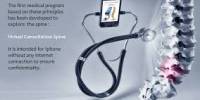Hydrogel injections can be used to treat antibiotic-resistant infections that occur after hip or knee replacements. Hydrogels are gel-like substances that can be injected into the affected area to deliver antibiotics directly to the site of the infection.
The challenges of total hip and knee replacements are enough for patients. When an infection develops thereafter, the outcomes are frequently disastrous and call for strong antibiotics and revisionary surgery.
Researchers from Shanghai Jiao Tong University School of Medicine created an injectable hydrogel that heals infections around prosthesis without the drawbacks of existing treatments, as reported in APL Bioengineering by AIP Publishing. The gel inhibits typical microbes and encourages tissue renewal, according to tests.
Pathogenic bacteria may stick to the surface of joint prostheses after hip and knee replacement procedures and create a potentially harmful biofilm. Strong antibiotics and additional surgery, such as the removal of contaminated tissue and the transplanting of new tissue, are used in gold standard clinical approaches to treat these infections.
However, these methods encounter issues such as toxicity, immune system issues, permanent tissue damage from tissue removal, hyper-resistant bacteria brought on by the overuse of antibiotics, and hyper-resistant bacteria themselves.
“It is important to explore a new strategy for treatment of infected soft tissue wounds because it is directly related to prognosis,” said author Ruixin Lin. “We aspire to develop a simpler, safer method to help more patients avoid suffering and help more doctors make the right choices.”
The researchers developed the black phosphorus-enhanced injectable hydrogel that is antibacterial and helps to restore biological barriers in soft tissue while also preventing recurrent infections. The gel’s capabilities for quick self-healing, high injectability, and porous structure are all present.
It is important to explore a new strategy for treatment of infected soft tissue wounds because it is directly related to prognosis. We aspire to develop a simpler, safer method to help more patients avoid suffering and help more doctors make the right choices.
Ruixin Lin
The hydrogel displayed good stability and was not harmful to tissue cells, according to in vitro testing. The gel releases silver ions when exposed to near infrared light. S. aureus, a common pathogen that causes disease in people, was effectively inhibited by this technique.
“Furthermore, an in vivo infected wound model showed that the hydrogel could not only inhibit the persistent infection of the wound, but also accelerate the deposition of collagen fibers and angiogenesis, thereby realizing the repair of the natural barrier of soft tissue,” said Lin.
A safe and practical synergistic antibacterial method for mending diseased soft tissue is offered by the new hydrogel. The group thinks it resolves present clinical issues, such as persistent infections brought on by antibiotic resistance, and offers fresh concepts for less invasive therapy. They anticipate using it in the clinic once they have studied its underlying mechanisms in depth.
Additionally, the hydrogel can provide a physical barrier to prevent the bacteria from spreading. However, more research is needed to determine the effectiveness of this approach in treating antibiotic-resistant infections after hip or knee replacements.
















